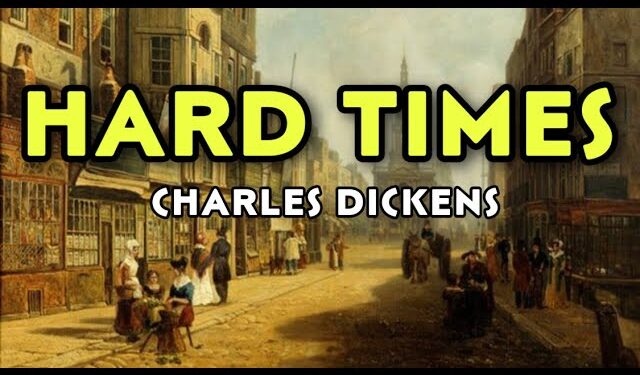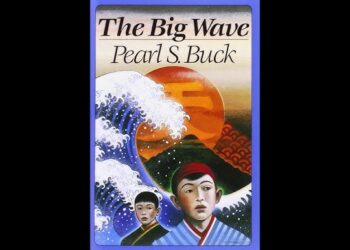Introduction To The Novel
Novel Hard Times Summary And Themes By Charles Dickens Published in 1854, Hard Times is one of Charles Dickens’ most important works, a social critique of the harsh realities of life in the industrial town of Coketown. The novel reflects Dickens’ concerns about the impact of industrialization on society, education, and human relationships.
Novel Hard Times Summary And Themes By Charles Dickens He explores themes such as utilitarianism, the dehumanizing aspects of industrial society, and the importance of imagination and compassion. Set against the backdrop of the Industrial Revolution, Hard Times criticizes the utilitarian philosophy that values efficiency and rationality over emotion and human experience. The title of the novel itself refers to the harsh realities individuals face in a rapidly changing world.
Narrative Structure
Novel Hard Times Summary And Themes By Charles The novel is structured into three books: “Sowing,” “Reaping,” and “Garnering.” This structure underscores the themes of causality and consequence, reflecting how the characters’ actions lead to specific outcomes. Dickens employs a mix of third-person narration and direct commentary to create a critical tone, allowing readers to engage with the characters’ struggles while reflecting on broader societal issues.
Part One: Sowing
Book I: Sowing introduces the primary characters and sets the stage for the conflicts that will unfold.
Characters
- Thomas Gradgrind: The central figure, Thomas Gradgrind, is a strict utilitarian who believes in the supremacy of facts and statistics. He is a schoolmaster who emphasizes empirical knowledge and dismisses imagination and creativity. His rigid philosophy has a profound impact on the lives of those around him.Novel Hard Times Summary And Themes By Charles
- Louisa Gradgrind: Gradgrind’s daughter, Louisa, is a product of her father’s educational philosophy. She is beautiful and intelligent but emotionally stunted due to her upbringing. Louisa’s struggles with her lack of affection and emotional fulfillment become central to the narrative.Novel Hard Times Summary And Themes By Charles Dickens
READ MORE
- Stephen Blackpool: A working-class man employed in a factory, Stephen represents the plight of the laboring class. He is kind-hearted and honest but trapped in a difficult situation due to his unhappy marriage and the oppressive industrial environment.Novel Hard Times Summary And Themes By CharlesNovel Hard Times Summary And Themes By Charles Dickens
- Josiah Bounderby: A self-made man and factory owner, Bounderby embodies the capitalist ethos of the time. He prides himself on his rise from poverty to wealth and promotes the idea of individualism, but he is ultimately hypocritical and cruel.Novel Hard Times Summary And Themes By Charles Dickens
- Sissy Jupe: The daughter of a circus performer, Sissy represents imagination and empathy, contrasting sharply with the Gradgrind philosophy. Her warmth and emotional intelligence highlight the deficiencies in the utilitarian approach to education.Novel Hard Times Summary And Themes By Charles
-

Novel Hard Times Summary And Themes By Charles Dickens
Plot Summary
The story begins with Gradgrind’s schoolroom, where he drills his students in facts. He is dismissive of imagination and creativity, believing that education should be based solely on empirical knowledge. Sissy Jupe, who struggles in Gradgrind’s rigid environment, is taken in by the Gradgrind family when her father abandons her.Novel Hard Times Summary And Themes By Charles
Gradgrind’s methodical approach to education leads to a lack of emotional development in his children. Louisa, under her father’s strict regime, becomes increasingly disillusioned with her life. She eventually marries Bounderby, a man much older than her, largely due to her father’s insistence on the match. This marriage is devoid of love, representing the emotional void created by Gradgrind’s educational philosophy.Novel Hard Times Summary And Themes By Charles
Novel Hard Times Summary And Themes By Charles Stephen Blackpool’s storyline unfolds parallel to the Gradgrinds’. He is in a loveless marriage to a drunken woman, and he longs for a better life. His plight underscores the struggles of the working class and the harsh realities of factory life. When Stephen approaches Bounderby for help regarding his marriage, Bounderby dismisses him, emphasizing the indifference of the wealthy toward the struggles of the poor.Novel Hard Times Summary And Themes By Charles Dickens
READ MORE
Part Two: Reaping
Book II: Reaping explores the consequences of the characters’ actions, revealing the impact of Gradgrind’s philosophy on their lives.
Louisa’s Conflict
As Louisa grapples with her loveless marriage to Bounderby, she begins to realize the emptiness of her existence. She seeks solace in her childhood memories and the companionship of Sissy, who embodies the values of love and imagination that Louisa has been denied. Louisa’s emotional turmoil is intensified when she meets James Harthouse, a charming but manipulative gentleman who attempts to seduce her.
Harthouse’s advances force Louisa to confront her dissatisfaction with her life and marriage. She experiences a deep internal conflict, torn between her desire for affection and her duty to her father and husband. This conflict ultimately leads Louisa to a breaking point, and she confesses her struggles to Gradgrind, who remains unable to understand the emotional dimensions of her plight.Novel Hard Times Summary And Themes By Charles
Stephen’s Struggles
Stephen Blackpool’s narrative continues to unfold as he tries to navigate his oppressive circumstances. His wife’s continued alcoholism and abuse exacerbate his suffering. Stephen’s innate goodness stands in stark contrast to the harsh realities of his life, and his struggles reflect the broader theme of the working class’s exploitation.Novel Hard Times Summary And Themes By Charles
When Stephen becomes entangled in a scandal involving the factory, he is unjustly accused and ostracized. Despite his innocence, he is punished by society, highlighting the injustices faced by the working class. Dickens uses Stephen’s character to expose the indifference of the upper class toward the plight of the poor and the moral failings of a system that values profit over human dignity.Novel Hard Times Summary And Themes By Charles
READ MORE
Part Three: Garnering
Book III: Garnering culminates the narrative, leading to the resolution of various plot threads and character arcs.
The Crisis Point
The tension in Louisa’s life reaches a peak when she confronts her father about the emptiness of her existence. Gradgrind’s inability to comprehend her emotional needs represents the limitations of utilitarianism. Louisa’s confrontation serves as a critique of the educational philosophy that has stifled her growth.Novel Hard Times Summary And Themes By Charles
Novel Hard Times Summary And Themes By CharlesMeanwhile, Stephen’s plight becomes increasingly dire. He is forced to leave Coketown in search of a better life, only to find himself in more difficult circumstances. His journey reflects the struggles of the working class, emphasizing the lack of opportunities for social mobility.

The Climax
The climax of the novel occurs when Stephen’s fate is intertwined with Louisa’s. As Louisa seeks to escape her suffocating marriage, she becomes increasingly aware of the emotional depths she has been denied. The tragic consequences of Gradgrind’s philosophy come to light when Louisa is faced with the reality of her choices.
In a poignant moment, Louisa confronts Bounderby about their loveless marriage, revealing her discontent and disillusionment. Bounderby’s reaction is dismissive, showcasing his lack of understanding and empathy. This confrontation forces Louisa to confront her own desires and needs.
Resolution
The novel concludes with the resolution of various storylines. Stephen Blackpool’s fate is sealed when he sacrifices himself to save a child, showcasing his innate goodness. His tragic end serves as a powerful indictment of the societal structures that perpetuate suffering.Novel Hard Times Summary And Themes By Charles
Louisa Gradgrind ultimately finds a semblance of peace as she reconciles with her past. The novel closes on a note of hope, suggesting that love, compassion, and imagination can triumph over the harsh realities of life. Dickens emphasizes the need for empathy and understanding in a world often dominated by cold rationality.
Themes in Hard Times
Hard Times is rich with themes that explore the complexities of human existence in an industrialized society. The following are the central themes of the novel:
1. Utilitarianism and Education
Novel Hard Times Summary And Themes By Charles Dickens Dickens critiques the utilitarian philosophy that prioritizes facts and efficiency over emotional and moral considerations. Through Gradgrind’s rigid educational methods, he illustrates the dangers of an education devoid of imagination and compassion. The novel advocates for a more holistic approach to education that nurtures emotional intelligence alongside intellectual development.
2. Industrialization and Its Effects
The novel paints a vivid picture of the industrial landscape, highlighting the dehumanizing effects of factory life on workers. Dickens illustrates the stark contrast between the wealthy industrialists and the impoverished working class. He emphasizes the exploitation and struggles faced by laborers, advocating for social reform to improve their conditions.
3. Class Conflict and Social Injustice
Novel Hard Times Summary And Themes By Charles DickensThe struggles of characters like Stephen Blackpool highlight the deep-seated social inequalities of the time. Dickens uses the interactions between different social classes to critique the indifference of the wealthy toward the plight of the poor. The novel underscores the need for empathy and understanding across class boundaries.
4. The Importance of Imagination and Compassion
Throughout the novel, characters like Sissy Jupe embody the values of imagination, empathy, and emotional intelligence. In contrast to the cold rationality of Gradgrind’s philosophy, Sissy represents the importance of human connection and the richness of emotional experience. Dickens advocates for the cultivation of these qualities as essential to a fulfilling life.Novel Hard Times Summary And Themes By Charles
5. Personal Growth and Redemption
The character arcs of Louisa and Stephen illustrate the journey toward self-awareness and redemption. Louisa’s struggle to break free from her father’s rigid beliefs represents the quest for personal identity and fulfillment. Similarly, Stephen’s moral integrity amidst adversity highlights the potential for goodness in a harsh world. The novel ultimately suggests that redemption is possible through love and understanding.
Conclusion
Hard Times remains a powerful critique of the industrial society of Dickens’s time, addressing issues that continue to resonate in contemporary discussions about education, social justice, and human values. Through its rich characterizations and compelling narrative, the novel challenges readers to reflect on the importance of compassion and imagination in navigating the complexities of life in an increasingly industrialized world.Novel Hard Times Summary And Themes By Charles
FAQ
1. What inspired Dickens to write Hard Times?
Dickens was inspired to write Hard Times in response to the social issues arising from the Industrial Revolution. He sought to critique the utilitarian philosophy that dominated education and industry at the time, as well as to shed light on the struggles of the working class in industrialized cities.Novel Hard Times Summary And Themes By Charles
2. Who are the main characters in Hard Times?
Novel Hard Times Summary And Themes By Charles Dickens The main characters include:
- Thomas Gradgrind: A strict utilitarian and schoolmaster.
- Louisa Gradgrind: Gradgrind’s daughter, struggling with emotional fulfillment.
- Stephen Blackpool: A working-class man facing hardships.
- Josiah Bounderby: A self-made factory owner with a hypocritical nature.
- Sissy Jupe: A compassionate girl who contrasts with the Gradgrind philosophy.
3. What is the significance of the title Hard Times?
The title Hard Times reflects the harsh realities faced by the characters in an industrial society. It symbolizes the struggles of the working class and the emotional challenges experienced by individuals trapped in a utilitarian framework. The title serves as a critique of the societal conditions that contribute to suffering and hardship.
4. How does Dickens portray the education system in the novel?
Dickens portrays the education system as rigid and devoid of emotional depth. Gradgrind’s emphasis on facts and statistics results in the emotional stunting of his students. The novel critiques an educational philosophy that neglects the importance of imagination, creativity, and compassion, ultimately advocating for a more balanced approach to education
READ MORE

















